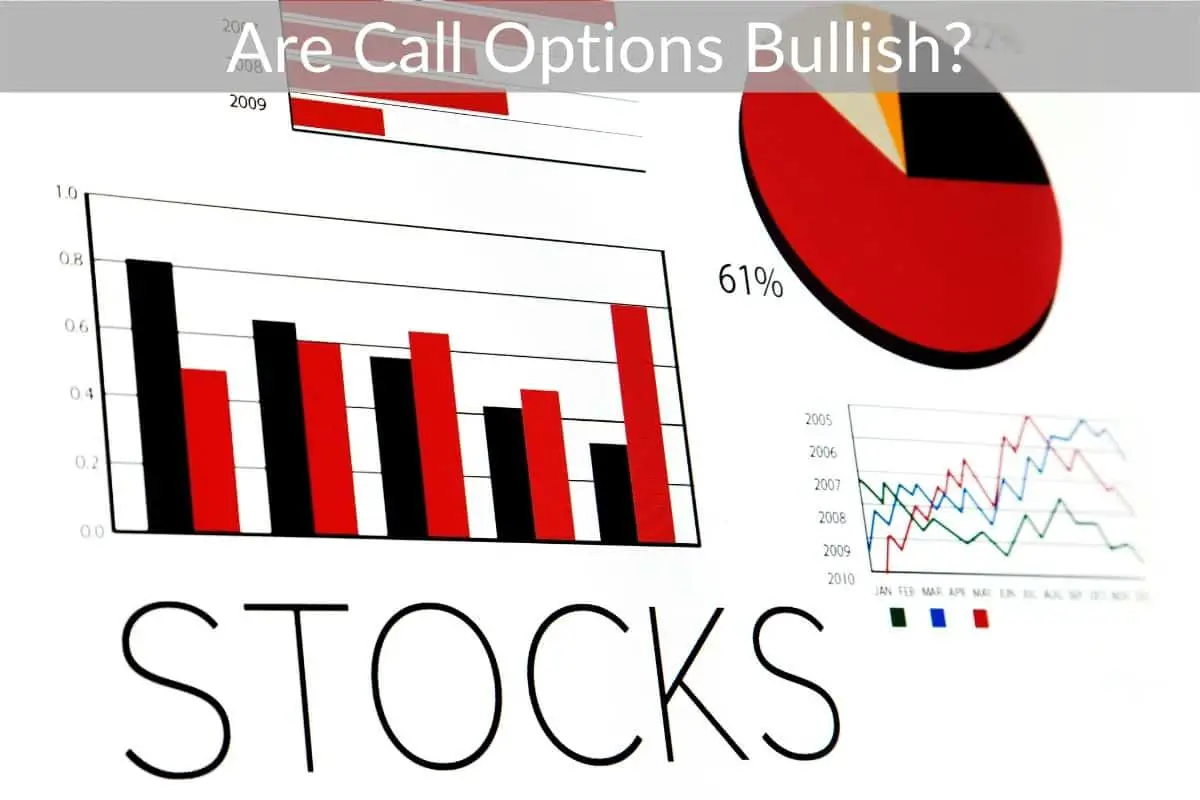Table of Contents
Markets can be volatile, which makes protecting your portfolio a key component of your investment strategy. Among the most appealing strategies available to investors are call options because they increase in value when the stocks they represent rise in price.
*This post may contain affiliate links. As an Amazon Associate we earn from qualifying purchases.
Call options can be bullish if you are buying calls. Buying a call option entitles you to own the security at an agreed-upon price and is therefore similar to making a bullish bet. You can also sell call options if you are neutral on a stock and think it will go sideways.
Call options are a form of investment strategy designed to minimize the risk associated with owning a long stock, especially in a volatile market. You can invest 10% of the capital (or so) to control the exact same number of shares for a specific period of time.
So buying call options allows you to have more leverage while keeping less of your money exposed to the market.
The major risk with all options though is that they expire. So if you are right about the direction of a stock but it doesn’t move until after the expiration date you will lose all of your capital.
In this article, you will learn more about instances when call options are bullish and also find out how you can trade call options.
Reasons Why Call Options Are Bullish
Buying and owning a call option places you in a long position. A long call is considered a bullish strategy since the option you own goes up in value when the price of the underlying stock goes up.
This type of options trading strategy is best used when you are bullish on a stock (or the overall market) and think the price of the shares will go up before the contract expires.
Buying a call option is thus similar to placing a bullish bet because you make money when the security goes up in price.
Also, a bullish call spread helps to limit the losses of owning a security while capping gains. This occurs when you buy calls at a given strike price while simultaneously selling a similar number of calls at a higher strike price.
As a result, it’s the most appropriate options strategy to use when you want to bet that a stock will increase in price after you purchase the options contract.
How a Bullish Call Option Works
As mentioned, a bull call spread is an options strategy formulated to benefit from a stock’s price increase. The strategy consists of two call options, which create a range containing a low and upper strike price.
However, for you to turn a profit, the stock price has to rise above the total of the predetermined price and the options premium.
Why Call Options Make a Good Investment
Buying a call option helps to magnify the gains in a stock’s value and can deliver much higher profits than direct stock ownership.
Additionally, a call option provides an investor with greater leverage than merely owning shares. And for a relatively small amount of capital, you get to enjoy a stock’s gains above the predetermined price until the option reaches expiration.
An investor trades a call option based on the expectation that the security’s price will rise before expiration and that he will profit from the movement.
In other words, it indicates that the investor is bullish on the stock or index. The trader hopes to realize a profit on the shares by purchasing them later at a lesser cost or by selling the call option at a profit.
The thing is, if the security’s price rises beyond what you spent purchasing the call option, you make a profit. The profit would arise from exercising your call option and buying the security at a price that’s less than the market value or simply selling the call and letting someone else exercise it.
In addition, call options boast clearly defined risk, and a trader is aware of how much he stands to lose from the onset. You see, when buying a call, your maximum loss is limited to the amount of premium paid.
On the other hand, your upside or profit can be unlimited and depends on the underlying security’s price movement.
In contrast, investors selling call options expect the stock to remain flat or go slightly lower in value, hoping to pocket the premium.
Selling call options is attractive because you receive an upfront cash premium without needing to lay out anything right away, then await the stock to reach expiration. Here, you make money if the stock falls in price, remains flat, or rises even by a small margin.
Unfortunately, you cannot multiply your earnings as a call option buyer can, and the most you get to make is the premium. Also, while selling call options is relatively low risk, it can turn risky because there’s a likelihood of missing out on some big gains if the stock price soars.
Buying Call Options
Call options are tradable financial securities, but here, you purchase a contract rather than the actual stock. The contract gives you the right or option to buy the shares represented sometime before the contract expires.
As a result, you pay a premium at a certain agreed price (strike price) for the option to exercise your contract.
The cost of the premium is based on the spread between the strike price and the security’s prevailing market price. The strike price typically refers to the price at which the call option converts to the stock upon it being exercised.
Note that if the option’s strike price is close to the stock’s current market price, the premium will most likely be pricey to buy.
The amount of shares on the underlying security depends on the contract, but in general, you purchase a call option contract in lots of 100 shares. This means that a single options contract represents 100 shares of the underlying asset.
So if the price of the option is $1 you would have to pay $100 to buy it as the option price is multiplied by 100.
You can buy options from a brokerage or through an exchange. Brokers typically charge a fee for placing an options trade which counts towards your overall transaction costs.
Recently there have been multiple brokerages that have popped up with cheap or free trading so if you trade options regularly these cheap brokerages can save you a good amount of money.
What To Consider When Buying Call Options
When buying a call option, you need to consider your exact expectations for the future carefully. Secondly, it’s essential to predict correctly:
- The precise direction of stock movement
- The time the stock movement will happen
- The size of the stock movement
With rising volatility, option prices tend to increase if factors such as stock price and expiration remain constant. But given that a bull call spread comprises a long and short call, the change in price of a bull call spread when volatility changes is insignificant.
Final Thoughts
If you hold a bullish outlook, call options can limit your trading risks while allowing you to profit from the gains on a particular security.
They also prevent you from incurring substantial losses, a scenario that is likely to occur when trading directly in stocks.

